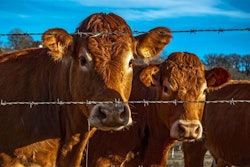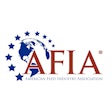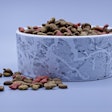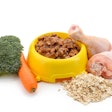
The Association of American Feed Control Officials (AAFCO) held its 2020 Annual Meeting "virtually" on August 5–7. Some of the enjoyable traditions that normally accompany the event (e.g., the roll call of the states), as well as the opportunities for networking and fellowship, were sorely missed. However, under the circumstances, it was nonetheless a fruitful meeting. In fact, there were a number of newsworthy developments coming out of the meeting, many on which will be reported in future columns.
Acceptance of definitions: “common or usual,” “common foods”
The very first item of discussion in the Business Meeting was the final vote for acceptance of the proposed definitions "common or usual" and "common foods." Both proposals passed without controversy. That may be because this is not a novel concept, as both AAFCO and the U.S. Food and Drug Administration (FDA) have long referenced the term "common or usual name" in their respective regulations as they pertain to declaration of ingredients. Also, the inclusion of many common foods in pet products has gone on unfettered for decades. So, while these new definitions do not necessarily change anything in terms of how pet foods are regulated, they were deemed important to implement to help both regulatory bodies and industry better understand the concept.
Briefly, "common foods" are items widely considered to be suitable for use in pet foods but not defined by AAFCO or otherwise expressly sanctioned by a regulatory body. In other words, these are items that are widely viewed by the public as "food," and have long histories of consumption by animals or people for their taste or nutritive value. These may include many of the items one may find at a typical American grocery store (particularly in the produce aisle), such as apples, zucchini and so on.
To be a common food assumes that the item is being offered in typical food form. Whole blueberries, for example, either fresh or with the moisture removed, is a perfectly acceptable common food for use in pet products. However, if that blueberry is processed in some way where its composition or properties are materially changed — for example, a blueberry pomace or extract — that would no longer be a common food, as there's no established history of people or pets eating it in that form. Further, exotic fruits, such as acai, may not be common foods because their recent history of consumption is predominantly with respect to their purported health benefits, not because of their culinary properties.
When an item is not a common food, establishment of a new AAFCO Feed Ingredient Definition or other regulatory process, such as a Generally Recognized As Safe (GRAS) Notification, may be necessary to provide for use in pet foods. Even when the ingredient is agreed to be a common food, it remains the manufacturer's responsibility to ensure that its use in pet food is appropriate and at safe levels for the intended species.
Term use and pet food labeling
Essentially, the "common or usual name" of an ingredient is how it needs to be declared on the label in precise but succinct terms. This includes AAFCO-defined ingredient names, names established by other regulatory means (e.g., a GRAS Notification, Food Additive Petition or FDA Standard of Identity) and names of common foods. Uniformity in declaration is important to help ensure that the purchaser knows exactly what is in the product. It also hinders manufacturers from altering a name to obfuscate the nature or properties of the ingredient or to misleadingly boost its appeal. For example, chicken meal is "chicken meal," not "chicken protein" or "dried defatted chicken." Apples must be declared as "apple" or "apples," not "dessert apple," "pome" or by another fanciful term.
Also important to note, the typical name of an ingredient on a human food label may not be appropriate when dealing with a pet food. AAFCO regulations require the use of the AAFCO name when one exists; i.e., it is the common or usual name as it applies to pet food. So, for example, while one may see "non-fat dried milk" on many human food labels, the same ingredient in pet food would be more appropriately declared as "dried skimmed milk" (AAFCO #54.3).
Further discussion on definitions may continue
Notwithstanding these new definitions, regulators and industry may continue to disagree as to whether a particular ingredient is common or not and/or what to call it. There may be more discussion on these terms within AAFCO as times go by. For example, the confusingly named "Not-Defined Workgroup" within the Ingredient Definitions Committee is intending to compile a positive (but hopefully not exhaustive) list of acceptable common foods.
The exact verbiage for these definitions will appear in the 2021 edition issue of the AAFCO Official Publication. In the interim, they should also appear in the minutes of the Business Meeting on the AAFCO website.
Briefly: Top 5 takeaways
- The final vote was taken on the acceptance of formal definition proposals for "common or usual" and "common foods," and both proposals passed.
- "Common foods" are items widely considered to be suitable for use in pet foods but not defined by AAFCO or otherwise expressly sanctioned by a regulatory body.
- The "common or usual name" of an ingredient is how it needs to be declared on a pet food label in precise but succinct terms.
- The typical name of an ingredient on a human food label may not be appropriate when dealing with a pet food; AAFCO regulations require the use of the AAFCO name when one exists.
- The exact verbiage for these definitions will appear in the 2021 edition issue of the AAFCO Official Publication.


















